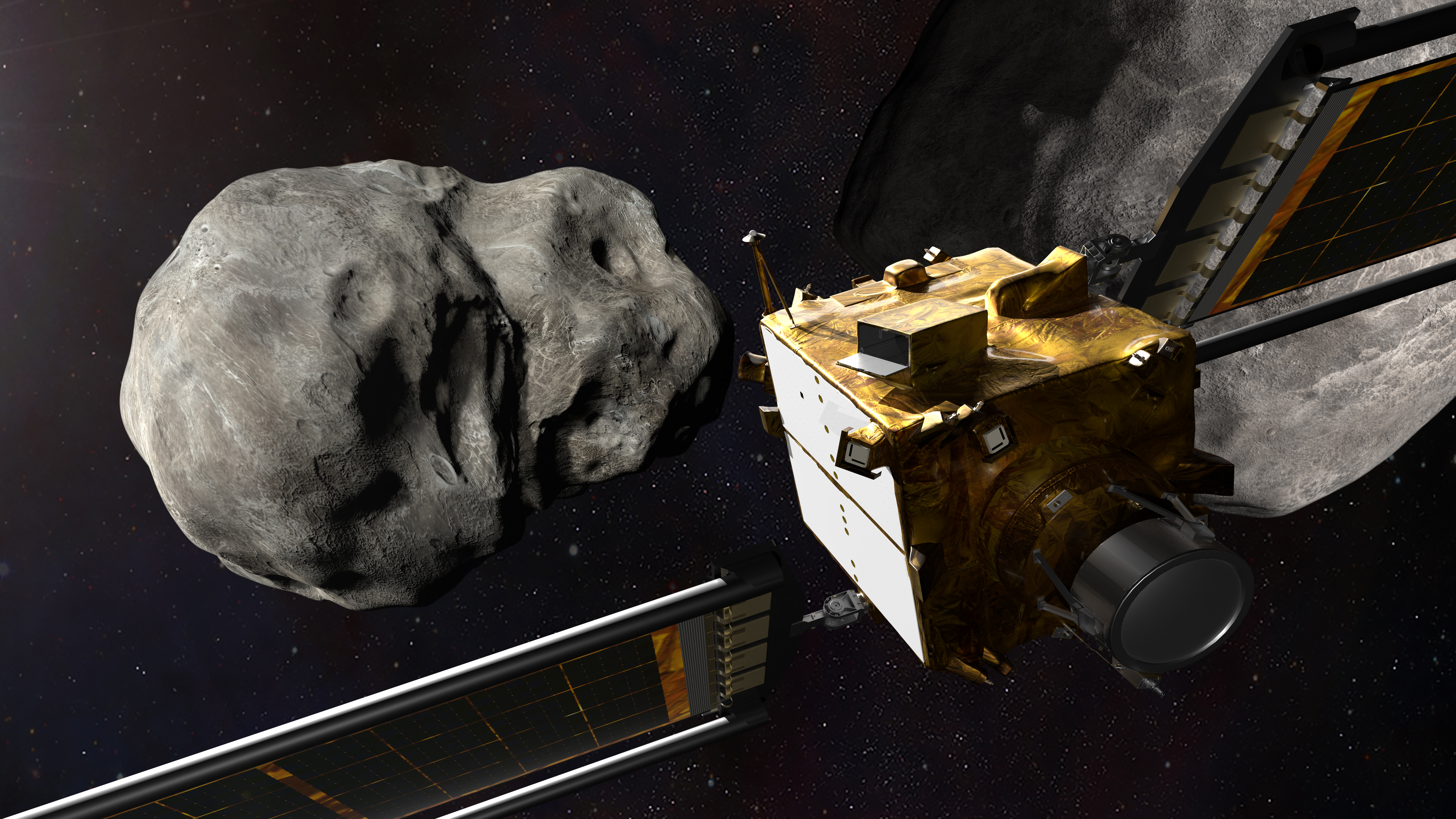News & Resources
03/08/2022
Johns Hopkins APL Named One of Fast Company’s Most Innovative Space Companies

With just six months until NASA’s Double Asteroid Redirection Test (DART) spacecraft is scheduled to impact an asteroid in the world’s first full-scale planetary defense test, Johns Hopkins APL has been named No. 3 on Fast Company’s 2022 World’s Most Innovative Space Companies list for building and managing DART.
Credit: NASA/Johns Hopkins APL
With just six months until NASA’s Double Asteroid Redirection Test (DART) spacecraft is scheduled to impact an asteroid in the world’s first full-scale planetary defense test, the Johns Hopkins Applied Physics Laboratory (APL) in Laurel, Maryland, has been named No. 3 on Fast Company’s 2022 World’s Most Innovative Space Companies list for building and managing DART.
The Space list, which also features SpaceX (No. 1), Planet Labs (No. 2) and Rocket Lab (No. 8), “honors businesses that are making the biggest impact on their industries and culture as a whole…[and] creating the future today with some of the most inspiring accomplishments of the 21st century,” according to Fast Company. APL is one of 10 companies recognized in the Space category.
“This is wonderful recognition for a unique mission, and it is an honor to be named again to Fast Company’s list of Most Innovative Space Companies,” said APL Director Ralph Semmel. “We are eagerly anticipating DART’s autonomous dive into Dimorphos and the incredible science we will learn in the aftermath. At APL, we take great pride in developing and executing these kinds of bold solutions to solve our nation’s, and in this case our universe’s, most critical challenges.”
The first mission developed for NASA’s Planetary Defense Coordination Office (PDCO), DART will prove that a spacecraft can autonomously navigate to a target asteroid and intentionally collide with it, a method of asteroid deflection known as kinetic impact. DART will simultaneously test new technologies and provide important data to enhance our modeling and predictive capabilities, helping us better prepare for an asteroid that might pose a threat to Earth, should one be discovered.
DART’s target is the binary asteroid system Didymos. Although not on a path to collide with Earth and no actual threat to our planet, the Didymos system is an ideal candidate for humankind’s first planetary defense experiment. It’s composed of two asteroids: a larger asteroid called Didymos (diameter: 2,500 feet) and a smaller asteroid moonlet called Dimorphos (diameter: 525 feet), which orbits Didymos. By crashing into Dimorphos and changing its orbit around Didymos even by a few minutes, DART will prove the technological capability to move an asteroid and provide information to further improve humanity’s understanding of how to approach an actual celestial threat in the future.
From Earth’s vantage, the Didymos system is an eclipsing binary, meaning as Dimorphos orbits Didymos, it passes in front of and behind the larger asteroid. Consequently, Earth-based telescopes can track the change in Dimorphos’ orbit by measuring the regular variation in brightness of the combined Didymos-Dimorphos system.
Scientists timed DART’s impact for fall 2022 because Didymos will be close to its minimum distance from Earth, at roughly 6.8 million miles. That relatively “close” proximity enables scientists, using powerful telescopes around the world, to make the best possible observations to determine the effect of DART’s impact.
The DART demonstration has been carefully designed. The impulse of energy that DART delivers to Dimorphos is low so it cannot disrupt the asteroid other than bring its orbit closer to Didymos and potentially cause Dimorphos to wobble on its own rotational axis.
DART, which launched on a SpaceX Falcon 9 rocket out of Vandenberg Space Force Base in California early in the morning of Nov. 24, 2021, is one of many innovative space missions that APL has created and managed for NASA. Currently delivering science are the New Horizons mission to Pluto and the Kuiper Belt, and the Parker Solar Probe mission to the Sun. The Interstellar Mapping and Acceleration Probe (IMAP) is in development for launch in 2025, and, in partnership with NASA’s Jet Propulsion Laboratory, Europa Clipper is coming together for its 2024 launch to explore Jupiter’s moon Europa. Dragonfly, a rotorcraft-lander expedition to Saturn’s large, mysterious moon Titan that earned APL the No. 4 slot on the 2020 Most Innovative Space Companies list, is scheduled to launch in 2027.
This is APL’s fourth appearance on a Fast Company Most Innovative Companies list, including in 2016 for DARPA’s Revolutionizing Prosthetics program, as well as in 2018 and 2020 for Parker Solar Probe and Dragonfly, respectively.
Climate TRACE (for Tracking Real-time Atmospheric Carbon Emissions), a global coalition of which APL is part, ranked No. 5 on the World’s Most Innovative Companies overall list, and No. 3 in the Energy category. It provides a public, independent measure of human-caused greenhouse gas emissions using remote sensing and artificial intelligence.

The first mission developed for NASA’s Planetary Defense Coordination Office, DART will prove that a spacecraft can autonomously navigate to a target asteroid and intentionally collide with it, a method of asteroid deflection known as kinetic impact. DART will simultaneously test new technologies and provide important data to enhance our modeling and predictive capabilities, helping us better prepare for an asteroid that might pose a threat to Earth, should one be discovered.
Credit: NASA/Johns Hopkins APL/Ed Whitman
